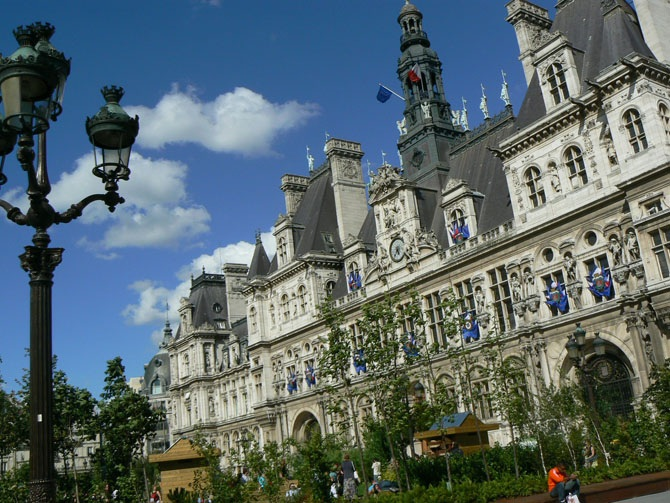MINI LECTURE: Street appropriation [1/13]
Cars have taken over our public space. That APPROPRIATION happens in stealth. Government responses to it seem a-political and technocratic. This hides a 1-directional process that should be highly politicised.
Case: BLOKKENWEG (Ede 🇳🇱)
Cars have taken over our public space. That APPROPRIATION happens in stealth. Government responses to it seem a-political and technocratic. This hides a 1-directional process that should be highly politicised.
Case: BLOKKENWEG (Ede 🇳🇱)

[2/13]
The BLOKKENWEG parallels the train tracks between Utrecht (to the west) and Arnhem (to the east).
It links directly to an important railway crossing for traveling between Ede-South and Ede center. The street and tracks are separated by public allotments since the 1980s.
The BLOKKENWEG parallels the train tracks between Utrecht (to the west) and Arnhem (to the east).
It links directly to an important railway crossing for traveling between Ede-South and Ede center. The street and tracks are separated by public allotments since the 1980s.

[3/13]
Built in the 1920s, it was part of a small garden-city district for workers of the ENKA factory. The houses, meant for white-collar workers, were relatively large. Originally, the street was a gravel road with a dedicated walking path.
Cars where almost non-existent.
Built in the 1920s, it was part of a small garden-city district for workers of the ENKA factory. The houses, meant for white-collar workers, were relatively large. Originally, the street was a gravel road with a dedicated walking path.
Cars where almost non-existent.

[4/13]
This picture, looking east, is probably before 1980.
The gravel path became a wide (50 km/h) asphalt road. With two small, elevated sidewalks. The painted triangle warns drivers to slow down for a crossing.
The gravel road has become the domain of car traffic.
This picture, looking east, is probably before 1980.
The gravel path became a wide (50 km/h) asphalt road. With two small, elevated sidewalks. The painted triangle warns drivers to slow down for a crossing.
The gravel road has become the domain of car traffic.

[5/13]
In 2009 (Streetview). Little has changed; new are the allotments on the left where locals can grow food. The left curb seems lowered.
The straight road apparently encourages speeding; we see that shallow speed bumps have been added. The official speed limit is 30 km/h.
In 2009 (Streetview). Little has changed; new are the allotments on the left where locals can grow food. The left curb seems lowered.
The straight road apparently encourages speeding; we see that shallow speed bumps have been added. The official speed limit is 30 km/h.

[6/13]
In 2009, we see that most houses have a small garage just behind the house and a driveway to park a car next to the house.
Some people park their car curbside. Oncoming car traffic can use the right, lowered curb to pass unimpeded.
Streetview: google.com/maps/@52.02956…

In 2009, we see that most houses have a small garage just behind the house and a driveway to park a car next to the house.
Some people park their car curbside. Oncoming car traffic can use the right, lowered curb to pass unimpeded.
Streetview: google.com/maps/@52.02956…


[7/13]
In 2018, several home owners have extended their private garden, some garages have become sheds and some houses are being expanded.
All-in all, home owners reduce their former private parking space in favour of other uses.

In 2018, several home owners have extended their private garden, some garages have become sheds and some houses are being expanded.
All-in all, home owners reduce their former private parking space in favour of other uses.


[8/13]
This clearly relates to an increase in curbside parking along the entire street. The increase in number and width of parked cars makes the street much harder to navigate. For car drivers, but also for cyclists.
Riding/driving becomes a continuous stressful shuffle.
This clearly relates to an increase in curbside parking along the entire street. The increase in number and width of parked cars makes the street much harder to navigate. For car drivers, but also for cyclists.
Riding/driving becomes a continuous stressful shuffle.

[9/13]
One way to solve this is of course to also use a part of the sidewalk for car parking. This 2020 picture shows how this shaves another 40 centimeters of the sidewalk.
All this individual behaviour is condoned by local government and as such becomes the norm.
One way to solve this is of course to also use a part of the sidewalk for car parking. This 2020 picture shows how this shaves another 40 centimeters of the sidewalk.
All this individual behaviour is condoned by local government and as such becomes the norm.

[10/13]
This is Blokkenweg in 2020. A very uncomfortable experience, especially for vulnerable people or those cycling with children.
A result of individual choices without policies to prevent it.
This important, relative car-lite, connection is no longer safe for many.
This is Blokkenweg in 2020. A very uncomfortable experience, especially for vulnerable people or those cycling with children.
A result of individual choices without policies to prevent it.
This important, relative car-lite, connection is no longer safe for many.
[11/13]
Traffic engineers solved it! By taking away a 5m strip from the allotments, and building a first stretch of bicycle highway.
Good solution on 1st sigjht: comfortable, smooth & safe fresh tarmac.
It gets cyclists out of the way with a detour & two new danger points!
Traffic engineers solved it! By taking away a 5m strip from the allotments, and building a first stretch of bicycle highway.
Good solution on 1st sigjht: comfortable, smooth & safe fresh tarmac.
It gets cyclists out of the way with a detour & two new danger points!
[12/13]
You can now see what it really is:
👏 APPROPRIATING allotments where locals grow their food
👏 because car drivers have been allowed to APPROPRIATE public space for cars
👏 and home owners could APPROPRIATE private parking space for other uses.
A matter of politics!
You can now see what it really is:
👏 APPROPRIATING allotments where locals grow their food
👏 because car drivers have been allowed to APPROPRIATE public space for cars
👏 and home owners could APPROPRIATE private parking space for other uses.
A matter of politics!

[13/13]
This is Het Recht van de Snelste:
🐇 the technocratic, a-political way of dealing with public space.
🐇 Gradually and slowly chipping it away.
🐇 With results that has clear winners & losers
🐢 And that should be much politically discussed.
corr.es/snelste
This is Het Recht van de Snelste:
🐇 the technocratic, a-political way of dealing with public space.
🐇 Gradually and slowly chipping it away.
🐇 With results that has clear winners & losers
🐢 And that should be much politically discussed.
corr.es/snelste
@threadreaderapp please unroll
• • •
Missing some Tweet in this thread? You can try to
force a refresh



















